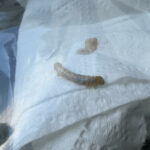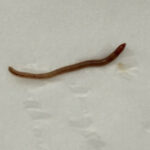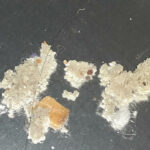Little boys love them, little girls think they’re gross, and adults think they’re pretty creepy, but one thing that all can agree on is: worms are downright fascinating! There are more than 9,000 species of (segmented) worms in existence today. Just a few types of worms include: sandworms, leeches, and earthworms. The earthworm is by far the most vast and varied group of segmented worms on the planet. Just think, there are more than 2,700 different types or earthworm living in every corner of the earth today.
There are so many things to learn about when it comes to worms such as anatomy, where they live, reproduction, and eating habits, that the amount of material for worm lesson plans is virtually endless. Besides material for worm lesson plans, there are a few things you should consider when creating fun and educational material.
When you are creating a worm lesson plan, consider:
the age of the children
what sort of involvement you’d like
Ask yourself if you:
plan on engaging the children in dissection activities?
want the children to observe instead of dissect?
think the children would like a long term project such as worm composting?
The Nature Gift Store Worm Farming Section offers the following ideas for worm lesson plans:
1. Lessons about decomposition
2. Lessons about plant growth and worms
3. Lessons about compost and worm life cycles
4. Ways that worms help the environment and the planet
If you want more material for your worm lesson plans, continue reading to learn all about earthworms.
All About Earthworms
Earthworms can be found in just about every corner of the earth. They live in trees, in bark, and under rocks as well as along rivers and near springs, and ponds. Their favorite place to live, however, is in the earth’s rich soil. During the winter months they burrow deep within the earth until the surface warms again during the spring. During the warm summer months, worms stay closer to the tops of soil where they create tunnels to wiggle in and out of. These tunnels are extremely important for plant life as they create a path for water and air, which is essential for the survival of plant life.
Places like China, Australia, Greenland, and the Sahara Desert have their own indigenous species of worms. Besides the Sahara Desert, you won’t find large numbers of worms living in “sandy” areas, especially sandy beaches. The vast majority of worms on our planet can only survive under certain environmental conditions.
Worms have no lungs, so they breathe through their skin. This means that the worm’s environment and skin must be moist at all times. This allows the worm to breathe in oxygen. If the worm’s skin dries out, the worm will die from suffocation. While worms need moisture to survive, too much moisture can be fatal. If too much water is present, it takes the place of oxygen, which will cause the worms to flee to the surface. Once on the surface, worms will be exposed to sunlight. If worms remain in the sunlight for too long, they can become paralyzed.
In addition to needing a moist environment for survival, worms must also remain close to their food supply. Worms feed off of leaves and dead grass, which contain organisms that provide a healthy diet of bacteria, algae, and fungi. Worms feast on dirt as well, especially if they live deeper inside the earth. Worms also eat plants, fruits and vegetables.
Although you cannot see them, believe it or not, worms do have mouths. The worm’s mouth is actually big enough and powerful enough to grab a leaf and drag it around. They also have a pharynx, esophagus, crop, gizzard and intestine. When the worm eats its food, it pulls the materials into its mouth with the help of the pharynx and its prostomium (also called acron). This creates a suction motion. This suction motion aids in helping the worm consume large amounts of food in a sort amount of time. The gizzard grinds the food. Worms eat so much that they typically produce excrement equal to their own weight every 24 hours.
The worm’s moist, sustenance rich environment plays an extremely important role in reproduction as well. Worms prefer to mate and reproduce in warm moist soil, away from the light.
All About Worms is always free, always reader-supported. Your tips via CashApp, Venmo, or Paypal are appreciated! Receipts will come from ISIPP Publishing.















